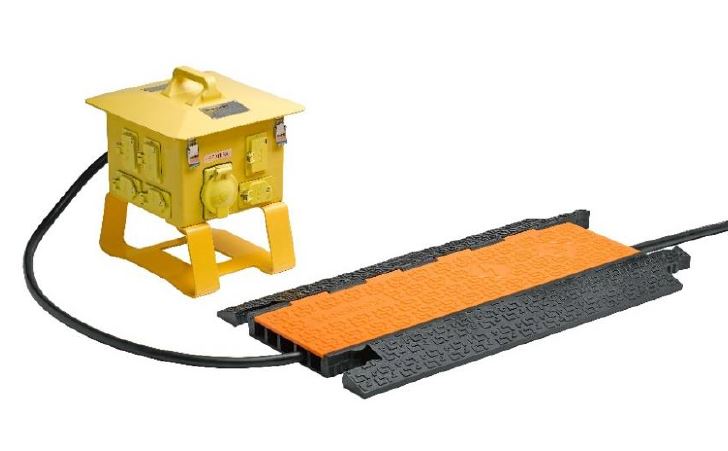 When power is needed across long distances and within hard-to-reach areas of a job site, a portable electrical outlet box is a flexible, convenient, safe and affordable solution for any contractor.
When power is needed across long distances and within hard-to-reach areas of a job site, a portable electrical outlet box is a flexible, convenient, safe and affordable solution for any contractor.
Portable power boxes, such as Molex’s Woodhead Super Safeway Portable Power System, are built to last, allowing contractors to run power tools, lighting and other electrical devices – wherever and whenever they want.
[youtube https://www.youtube.com/watch?v=r96tSsEhpi0&w=400&h=225]
Portable electrical outlet box applications
- Temporary power
- Construction sites
- Petrochemical facilities
- Oil and gas
- Indoor and outdoor events
- Convention centers
- Amusement parks
- Disaster relief
Unprecedented durability
Quality portable power devices, like that of Molex, feature a vulcanized rubber enclosure and self-closing, waterproof lid. Such a device should be able to withstand nasty weather, while also being resistant to shock, impact and corrosion. In the Molex portable power system, for example, weather-resistant open-neutral GFCI modules help prevent unsafe operating conditions.
Enhanced safety
It’s helpful to have portable electrical outlet boxes that can provide UL-, National Electrical Code– (NEC) and OSHA-recognized power delivery solutions for indoor and outdoor applications in both the U.S. and Canada. Sturdy aluminum legs are another plus, keeping electrical components 6 inches above ground level to achieve NEC regulatory compliance.
Easy modularity
Contractors often prefer portable power distribution systems that are lightweight and easy to move. Molex’s power box, for example, includes a handle for carrying and legs that allow additional power boxes to be stacked. Its compact design is easily stored and perfect for contractors who are operating in confined spaces.
Color-coded for power balancing
It’s necessary to make sure a portable power box includes circuit-breaker identification. It’s also important to ensure straight-blade models have color-coded receptacles to help users balance their AC current loads equally between phases, reducing the risks of a power outage.
Additional benefits
- No fumes/emissions
- No noise
- Improve performance while staying green
- Almost no maintenance
- Clean, reliable power wherever and whenever you want
 Cable protector a helpful accessory
Cable protector a helpful accessory
- It should feature a heavy-duty polyurethane surface able to withstand a typical semi-trailer truck, protecting cables and hose lines. (Molex’s Safeway Cable Protector features a load capacity of 16,300 pounds per tire, as well as 32,600 pounds per axle at 70 degrees Fahrenheit.)
- A five-channel design is ideal for accommodating up to 1.25” (3.175 cm) diameter cables or connections, fitting nearly any exposed cable.
- Having a hinged lid (along with a non-metallic, reinforced fiberglass hinge pin) simplifies access for cable insertion and removal.
- Safety is paramount, so the cable protector should include a tread design that delivers excellent traction and follows industry standards (ANSI/NEMA Z535.3-2011) to reduce slip-and-fall incidents.
- The cable protector should be able to cross-mate with other protective brands and products, enhancing design flexibility and reducing inventory.
- The device should be portable, featuring a slip-notch connector design that reduces friction to ease mating and unmating. It should also deliver exceptional durability and connectivity, featuring an easy-carrying handle.
- A cable protector should be made from UV-stabilized material that is suitable for prolonged exposure to sunlight.
Related posts
Electrical panel inspection safety tips for every electrician
National Electrical Code updates simplified with Leviton’s Captain Code